Concrete Crack Filling in College Station: Effective Solutions for Durable Repairs
Concrete crack filling is an essential service in College Station for maintaining the integrity and appearance of concrete structures. In areas like College Station where construction and infrastructure are booming, the upkeep of concrete surfaces is vital for both safety and aesthetics. Cracks in concrete can arise from a variety of factors, including weather conditions, soil movement, improper installation, and heavy loads. These cracks not only reduce the visual appeal of concrete structures but can also lead to further damage if not addressed in a timely manner.
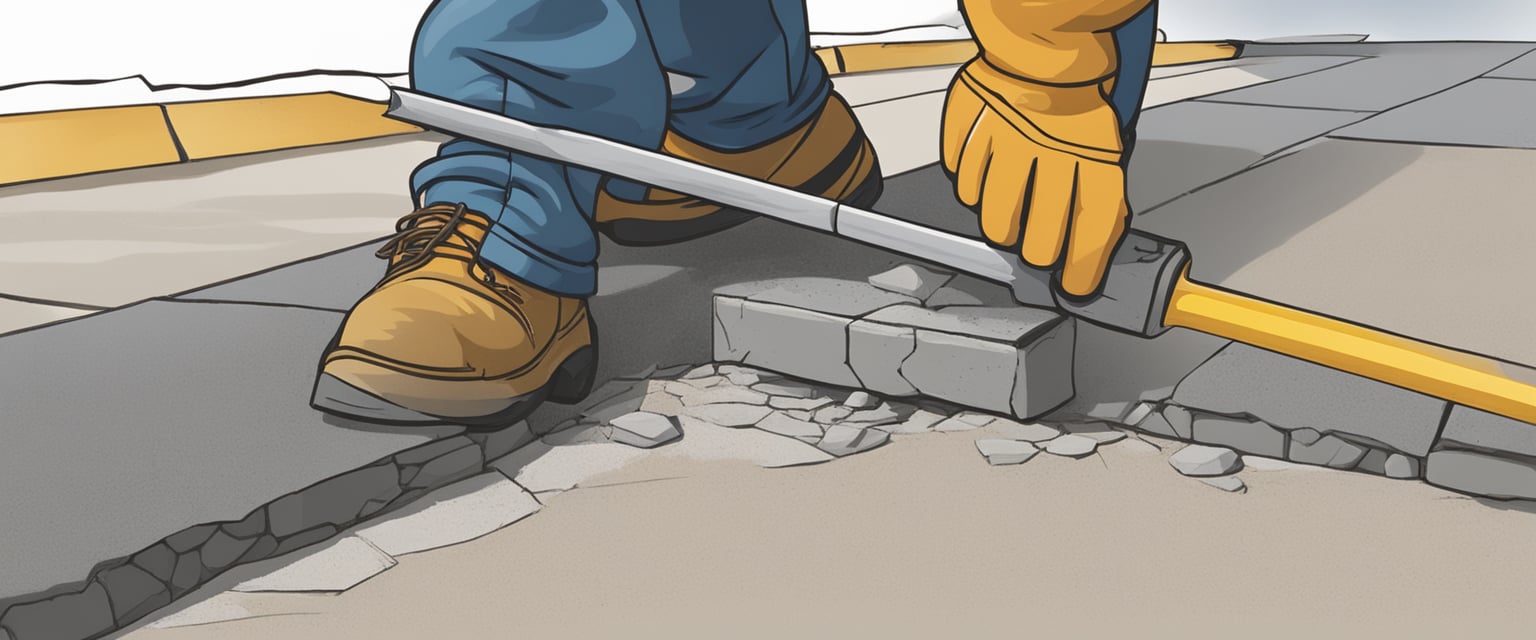
Addressing the problem of concrete cracks involves a clear understanding of the damage type and the most effective repair techniques. The right approach to filling concrete cracks is contingent on the size and nature of the crack, as well as the structure’s specific requirements. Professional services in College Station employ a range of methods and materials, ensuring that repairs are durable and long-lasting. While some homeowners may consider DIY crack filling solutions, professional services provide the expertise necessary to diagnose and rectify concrete issues properly.
Key Takeaways
- Concrete crack filling is crucial for the maintenance of structures in College Station.
- Repair methods vary based on the crack’s characteristics and the structure’s needs.
- Professional services offer thorough and effective solutions for concrete crack filling.
Understanding Concrete Cracks
Concrete cracks can compromise the structural integrity and aesthetics of concrete structures. This section delves into the types of concrete cracks and explores the reasons behind their occurrence.
Types of Concrete Cracks
Hairline Cracks: Thin surface cracks that may not pose a significant threat to concrete’s structural integrity but could lead to problems if left unattended. Typically, these are less than 0.3 mm in width.
Structural Cracks: Cracks that occur due to incorrect design, faulty construction, or overloading. These cracks are often wider than 0.3 mm and may require immediate repair to maintain the concrete’s strength.
Causes of Concrete Cracking
- Drying Shrinkage: When the concrete dries, it shrinks. If the water content in the concrete mix is high, it’s more prone to shrinkage and cracking.
- Thermal Expansion and Contraction: Changes in temperature cause concrete to expand and contract, potentially leading to cracks if the concrete cannot accommodate these movements.
- Improper Curing: If concrete doesn’t cure properly, it can weaken and crack. Adequate curing maintains the moisture necessary for the cement to bond effectively with sand and aggregate.
- Excess Load: Excessive loads can exceed the strength of concrete, leading to cracks, especially in supporting elements like foundations.
Understanding these aspects can help in implementing suitable repair methods and preventing further damage.
Concrete Crack Filling Techniques
When addressing concrete repairs in College Station, specific techniques ensure the durability and aesthetic integrity of the structure. Each method is tailored to address various types and severities of cracks, prioritizing longevity and stability.
Sealing Cracks
Sealing is paramount for concrete crack repair, providing a weatherproof barrier that prevents further deterioration. Flexible sealants are typically used, accommodating the concrete’s slight movements, thereby reducing the risk of the crack reappearing.
Polyurethane Foam Injection
Polyurethane foam injection is a cutting-edge technique that not only seals but also stabilizes the concrete by filling voids beneath the surface. This method expands upon contact, which makes it ideal for effectively sealing even the most complex cracks, ensuring a thorough repair.
Concrete Leveling
In instances where the concrete is uneven, concrete leveling is employed as a corrective action. This technique elevates the sunken concrete to its original position, offering both functional and cosmetic benefits. It’s a crucial step in comprehensive concrete maintenance.
Selecting the Right Materials and Tools
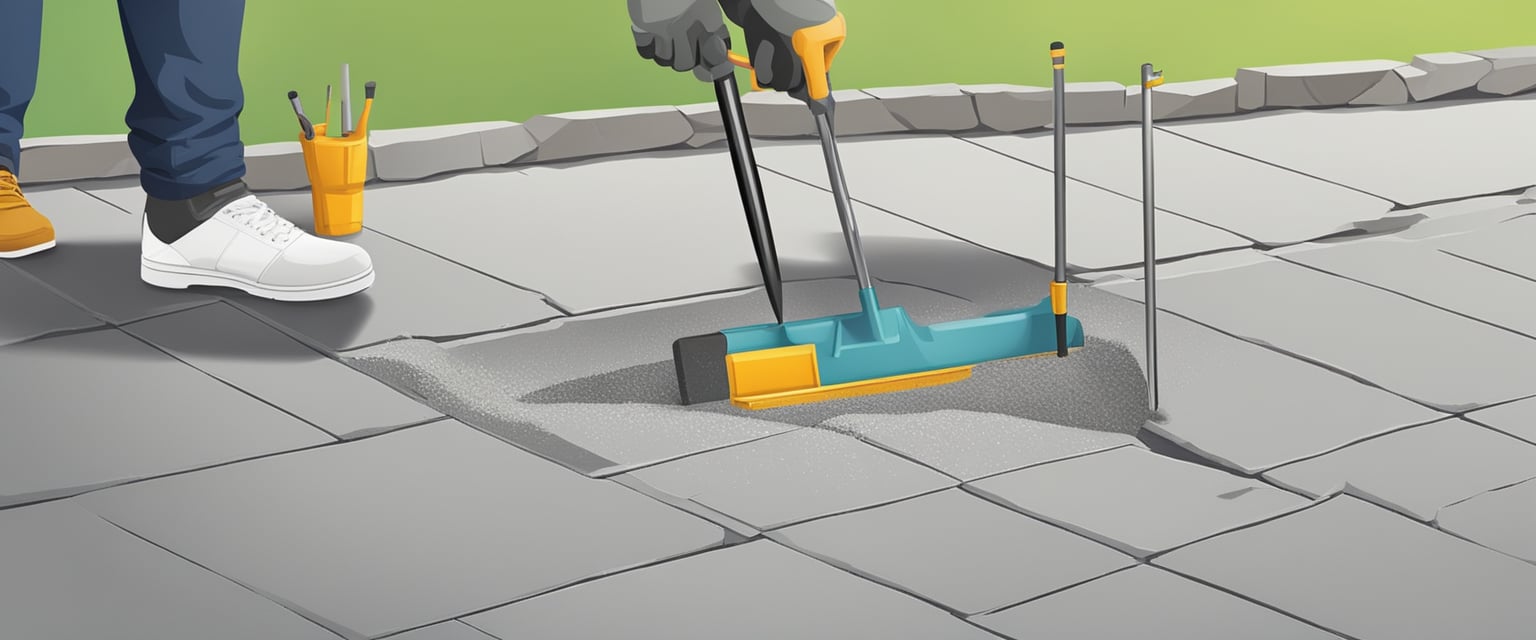
When addressing concrete crack filling in commercial structures in College Station, selecting appropriate materials and tools is decisive for ensuring long-lasting repairs. Commercial concrete structures demand products capable of withstanding heavy traffic and variable weather conditions.
For shallow, fine cracks, liquid concrete crack fillers are often sufficient. These are easy to apply and effective for non-structural damage. On the other hand, epoxy-based fillers are favored for deeper, wider cracks where structural integrity could be a concern. They provide a strong bond and durability.
Polyurethane foam can be used for cracks that need to flex and move, as it offers a combination of strength and elasticity. This can be important in areas with frequent temperature changes, which are common in College Station’s local climate.
In terms of tools, proper application begins with preparation; hence a wire brush is required to clean debris and a vacuum ensures a clean, dust-free crack before filling. For injecting fillers, caulking guns or needle tip mixers may be used depending on the viscosity of the filler.
Tools and Materials Checklist:
- Cleaners: Wire brush, Vacuum
- Fillers:
- For fine cracks: Liquid concrete fillers
- For wider cracks: Epoxy-based fillers
- For moving cracks: Polyurethane foam
- Application: Caulking guns, Needle tip mixers
It’s advisable for commercial entities to consult with a professional to ensure that the selected products are the best match for their specific type of concrete damage. For instance, providers known for their expert knowledge on concrete damage can offer insight into the specialized needs of the local concrete structures.
DIY Crack Filling vs. Professional Services
In College Station, homeowners might grapple with the decision between undertaking DIY concrete crack filling and hiring professional services. The choice hinges on the severity of the cracks and the skill level of the DIYer.
When to Call a Professional
Instances that necessitate calling a professional usually involve cracks that are indicative of deeper structural issues, such as foundation problems. Homeowners should solicit a local professional service when they observe cracks wider than 1/4 inch or when there’s evidence of water leakage or significant foundation settlement. Firms specializing in foundation repair typically offer free estimates, allowing residents to understand the extent of the problem before committing to a service.
Benefits of Professional Crack Repair
Opting for a professional crack repair service provides several advantages. Professionals bring a level of commercial-grade quality and expertise that ensures the repair will be durable and appropriately matched to the type of concrete and the specific conditions of College Station. Typically, professional services offer warranties for their work, giving homeowners peace of mind that the repair is supported should any issues arise post-service. Additionally, professionals are adept at handling both residential and commercial properties, tailoring their approach to suit each setting.
Prevention and Maintenance
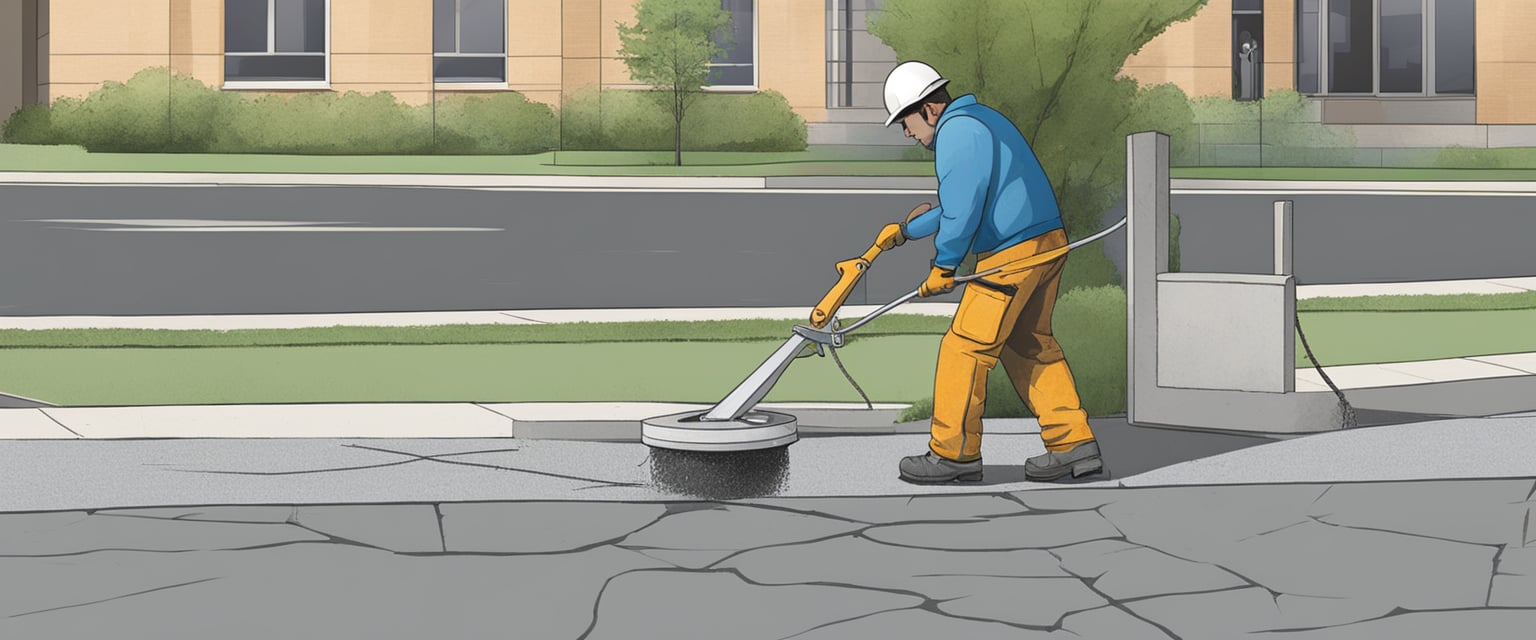
To ensure the longevity of concrete surfaces, a proactive approach to prevention and maintenance is crucial. The effective management of concrete involves regular monitoring and the application of protective treatments.
Regular Inspections and Assessments
Routine examinations of concrete surfaces are essential for identifying potential problems before they become significant issues. These inspections should occur periodically, with a focus on detecting any hairline cracks or early signs of wear and tear. Experts recommend seasonal assessments to account for weather-related stress on concrete structures.
Protective Sealants and Treatments
Applying protective sealants is a critical step in preserving the integrity of concrete. These concrete sealing treatments act as a barrier against moisture, temperature changes, and chemical exposure, all of which can contribute to the formation of cracks. It is advisable to reseal concrete every few years, depending on the product’s instructions and local conditions affecting the concrete.
Potential Costs and Budgeting
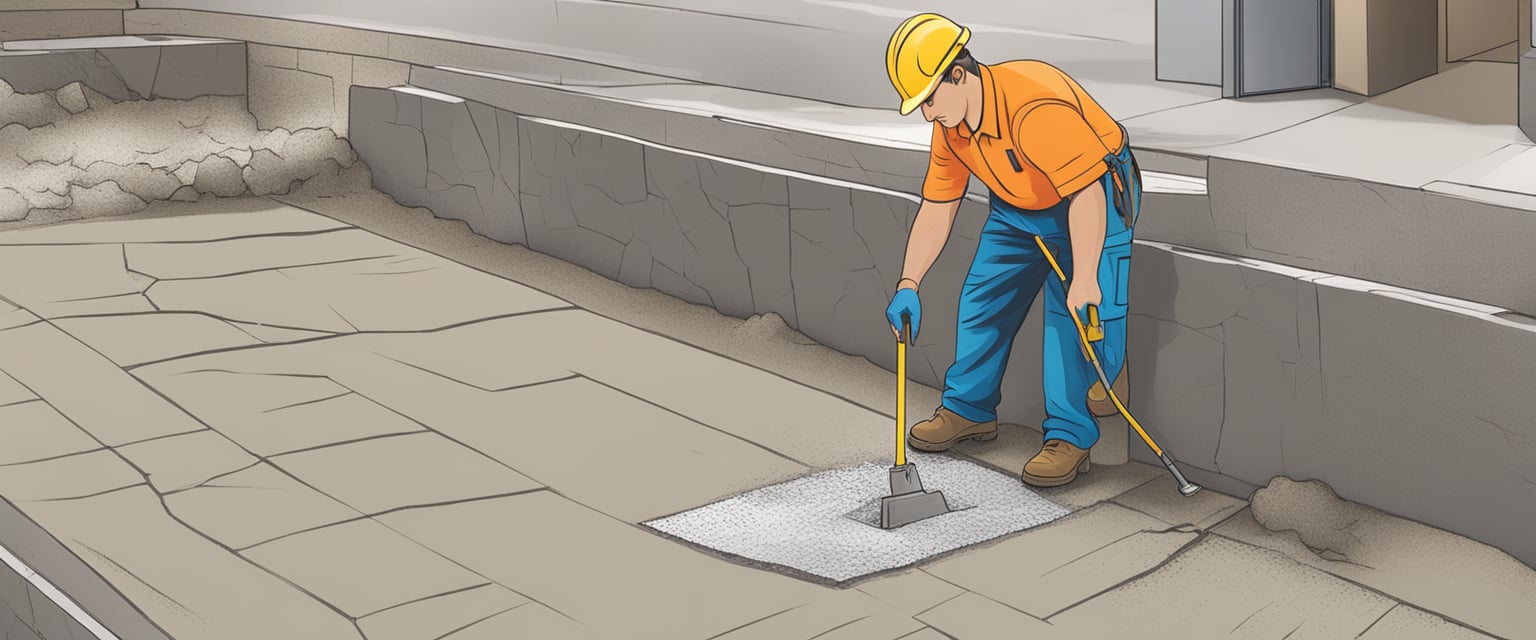
When considering concrete crack repair in College Station, TX, property owners should be prepared for a variety of costs. Commercial and residential repair expenses differ based on several factors including the extent of the damage, repair material costs, and local labor rates.
Repair Costs
Typically, the cost to repair cracked concrete begins at approximately $13.44 to $16.04 per linear foot. For those requiring budget-conscious solutions, the selection of DIY repair kits may reduce expenses. Nonetheless, larger commercial projects often necessitate professional intervention.
Material Choices
Epoxy and polyurethane are commonly used materials. Epoxy offers a strong bond, while polyurethane ensures flexibility and waterproofing. These materials can be purchased from local hardware stores in Texas.
Labor and Local Factors
Labor costs in College Station can influence the overall budget. Local services may offer free estimates, allowing individuals and businesses to gauge costs beforehand. For commercial entities considering extensive repairs, these initial consultations are invaluable for budgeting purposes.
Estimating Total Cost
To accurately estimate the total cost, property owners must consider:
- Size of Crack: Measurement in linear feet or square footage
- Depth: Significantly deep cracks may increase costs
- Location: Accessibility of the crack affects labor time
- Repair Method: Choice between DIY or professional services
It is advisable for those in College Station to acquire several quotes to ensure competitive pricing for their concrete crack repair needs.
Project Planning and Execution
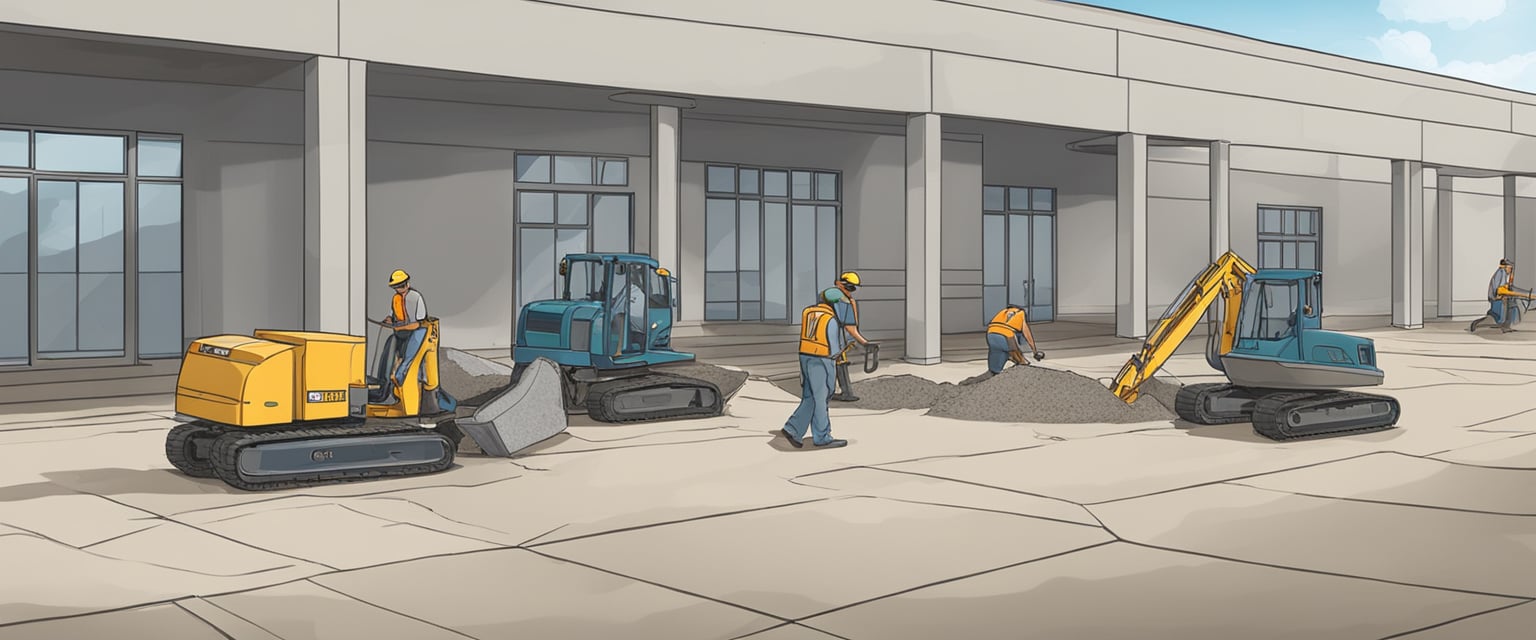
Effective project planning and execution is essential for successful concrete crack filling, addressing various structures such as commercial buildings, local businesses, and residential properties. The process includes a clear identification of the project scope, prudent scheduling, and strict adherence to safety and compliance standards.
Identifying Project Scope
The initial step in concrete repair is to determine the project scope, which involves a thorough assessment of the area needing attention. For a foundation or a patio, the focus is on stability and aesthetics, whereas for driveways and parking lots, durability to withstand frequent traffic is paramount. They identify the extent of the damage and the necessary repair techniques, ensuring all affected areas, whether it is a local business’s sidewalk or a commercial entity’s loading dock, are included for effective maintenance.
Timeframe and Scheduling
Timeframe and scheduling are critical to minimize inconvenience and ensure timely completion. The project timeline must consider factors such as the size of the parking lots or driveways, and the cure time for materials used. A strategic approach is adopted:
- Immediate planning for urgent crack repairs to prevent further damage.
- Scheduling longer projects, like patio or foundation restoration, during off-peak hours to reduce impact on daily operations.
Safety and Compliance
Finally, safety and compliance are non-negotiable elements. The project team adheres to local building codes and regulations, ensuring all work on commercial and local structures is up to standard. For the safety of workers and the public, they establish:
- A secure work zone with visible signage around driveways or parking lots.
- Use of appropriate protective gear and equipment.
Through meticulous planning and precise execution, they provide durable and aesthetically pleasing results for concrete surfaces, enhancing the longevity and functionality of the structures involved.
Case Studies
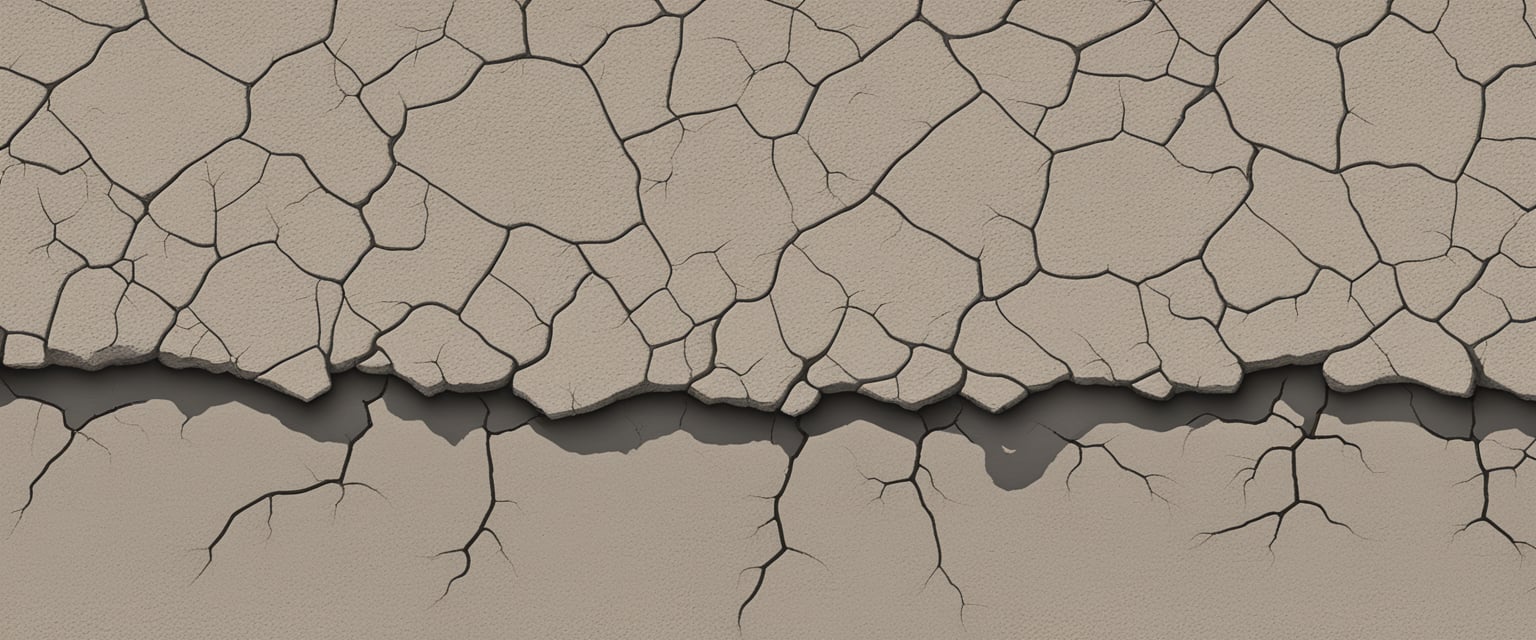
Within College Station, Texas, various projects have demonstrated the efficacy of concrete crack filling methods. These case studies reflect a range of scenarios from residential areas to large-scale commercial applications throughout Texas.
Residential Projects in College Station
In residential areas of College Station, homeowners have seen significant improvement in the longevity of their concrete driveways and patios following professional crack repair services. A specific case involved a homeowner in College Station, TX, where an extensive network of hairline cracks was successfully treated using a polyurethane injection technique. Reviews from the residents underscored the discrete and quick-curing qualities of the repair, which effectively restored the concrete surface.
Commercial Endeavors in Texas
The commercial sector in Texas, especially within Houston and Katy, showcases large-scale applications of concrete crack filling. A notable commercial project in Houston used epoxy injections to address structural cracks in a high-traffic parking garage. In Katy, a retail complex opted for a concrete sealant to preempt the worsening of surface cracks. These operations not only prevented further damage but also improved safety for visitors and extended the functional lifespan of the structures.
Conclusion
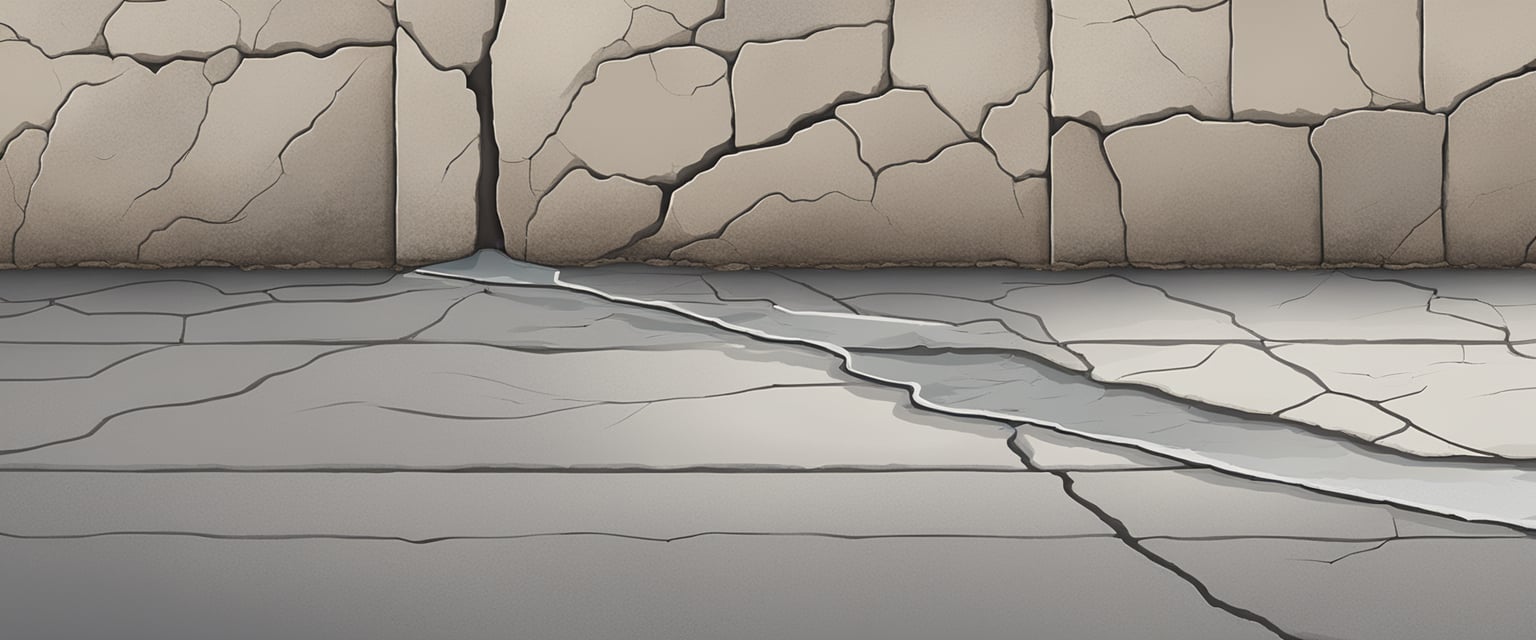
In College Station, addressing concrete cracks is essential for maintaining the structural integrity and aesthetic of concrete structures. Professional concrete crack repair services are available to tackle various issues ranging from surface spalling to alligator cracks. Utilizing the expertise of professionals can lead to significant long-term savings and ensure safety. Experts in the field of concrete repair apply their understanding of concrete damage to provide effective solutions. For instance, the LGC Paving specialize in these services within the local area.
Investigating the causes of cracks and implementing appropriate repair methods is crucial. For example, HECO Engineers have studied the issue of corrosion of reinforcement in concrete, pointing out that moisture, oxygen, and the presence of chlorides can lead to expanded reinforcement and subsequent cracking.
Moreover, innovative techniques such as machine-filling have shown promise in precisely addressing crack repairs. Research published on ScienceDirect discusses advancements like using glass powder to determine crack volume, which aids in the accurate filling of irregular cracks.
- Key Takeaways for College Station Concrete Repairs:
- Secure professional services to maintain safety and aesthetics.
- Understand the root causes of concrete damage to ensure effective repairs.
- Leverage advancements in technology and methodology for precise repair work.
The importance of addressing concrete issues promptly and effectively ensures the longevity and functionality of any concrete structure.
Frequently Asked Questions

This section provides insights into the most common inquiries about concrete crack filling services in College Station, covering everything from costs to materials and benefits.
What are the typical costs associated with concrete crack filling services?
The costs for concrete crack filling services in College Station vary widely depending on the project’s scale and the severity of cracks. Smaller cracks typically incur lower costs while larger areas of damage require more material and labor, increasing the price.
Which materials are commonly used by professionals for patching large concrete cracks?
Professionals often use epoxy or polyurethane foam for patching large concrete cracks. These materials provide strong adhesion and flexibility, thereby supporting the concrete’s integrity and preventing further damage.
What is the most effective sealant for repairing cracks in concrete surfaces?
For repairing cracks in concrete surfaces, a polyurethane sealant is often considered the most effective option. This sealant adheres well to the existing concrete and expands to fill the crack completely, creating a durable and weather-resistant barrier.
How does weather in College Station affect the concrete crack filling process?
Weather in College Station can influence the concrete crack filling process due to temperature and humidity variations. Ideal conditions for filling cracks are dry and mild; excessive heat or cold can affect the curing time and effectiveness of the repair materials.
What are the long-term benefits of professional concrete crack filling?
Professional concrete crack filling extends the lifespan of concrete structures, mitigates the risk of larger structural issues, and helps maintain a safe and aesthetically pleasing environment. Regular maintenance and crack filling can also prevent costly overhauls in the future.
How often should concrete surfaces be inspected for potential cracking?
It is advisable to have concrete surfaces inspected for potential cracking annually or whenever noticeable changes occur. Regular inspections and timely repairs can prevent minor cracks from becoming major structural problems.



